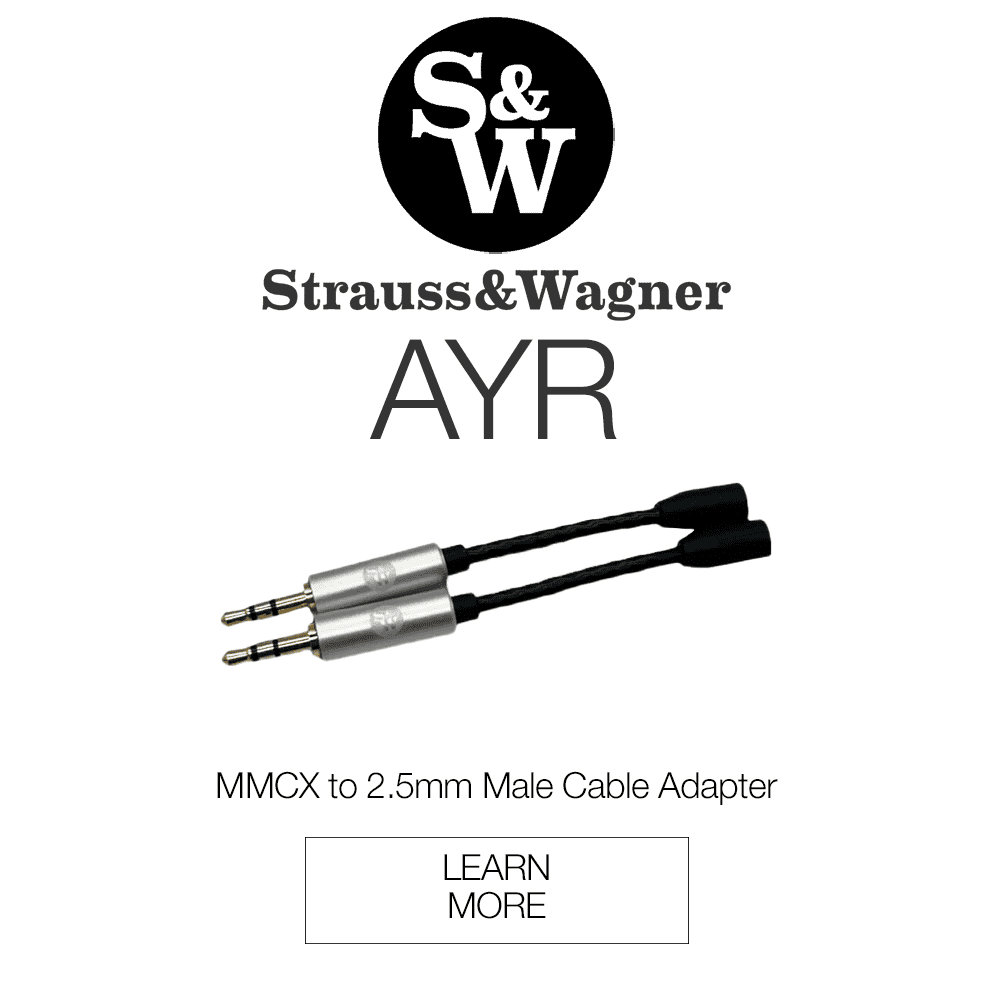The experimentation with different driver tech in IEMs has allowed the in-ear space to get far more sophisticated in recent years. We’ve seen manufacturers use subwoofer drivers and bone conduction tech, on top of more standard BA and dynamic drivers. But where much of the boundary pushing comes to light is in combining these driver types to create a coherent sound. With this in mind, I’m excited to have the opportunity to review the Legacy Edition of Empire Ears’s Triton IEM. Billed as a tri-brid IEM, it uses an advanced combination of drivers and internal tech to create a textured and captivating sound. And the best part? It comes in at $1,799 (we’re reviewing the Launch Edition), which makes it, while not cheap by any stretch, the most affordable entrant into Empire Ears’s line of IEMs. So enough beating around the bush, let’s get into the review.
What’s in the Box:
- Triton Dual Conduction Tribrid IEMs
- x5 sizes of eartips
- Metallic Aluminum Case
- Cleaning Tool
- Microfibre cleaning cloth
- Quickstart guide

Build:
Empire Ears blends premium materials with top notch design techniques to bring the Triton to life. It seems that a specific goal with this launch edition version is to showcase all of the potential that Empire Ears can offer. And that actually starts away from the IEM at the included cable. The Monarch, as it’s called, actually uses a “quinbrid” construction, including Solid Core 4N Silver, Silver Plated over 6NOCC, Solid Core 5N OCC Silver, Gold Plated over 4N Silver, and Palladium Plated over 4N Silver. The wire is housed inside a dual-layer, transparent SoftFlex PVC with black stranded nylon lining, which I have to say looks and feels excellent. My only nitpick with it may be some unwanted tangling after the splitter. And for those wondering, the cable terminates in 4.4mm Pentaconn, so you can use it straight out of the box with a balanced system.
Aside from the symbolic name and iconography of the Triton, which Empire Ears says is meant to reference the past, present, and future of the company, the company pays homage in other ways too. Its faceplate is in conversation with the company’s previous IEM “Valkyrie” with its Dragonhide theme. It also harkens back to the Legend X’s shell sizing. And while these references as symbols are very nice, it’s important to look at the real world use case of this IEM. All told, the Dragonhide faceplate is beautiful. Everything from the cable to the connectors to the shell feel high quality and durable. My only gripe would be that the housing is large. It is light though, so I didn’t find it uncomfortable. However, those with smaller ears may want to be on the lookout for a tight fit.
Design:
At the heart of the Triton’s architecture is its tribrid driver configuration that incorporates a W9+ subwoofer, EMP75 balanced armatures, and dual high-mass bone conductors. This setup is designed to deliver a rich, immersive sound experience that pushes the boundaries of in-ear monitor performance. Of course, we’ll weigh in on if that’s successful in our sound impressions section.
The W9+ subwoofer provides the bass, while the EMP75 balanced armatures deliver the mid-range. The EMP75 was developed in partnership with industry giants like Knowles and Sonion. This combination of components allows for an expansive yet precise sonic range, making the Triton a benchmark in its class.
The Dual Conduction Architecture (DCA) blends both air and bone conduction, creating a multi-layered auditory experience that resonates both in sound and tactile sensation. This is complemented by the synX crossover network, which aims to ensure seamless integration of the different driver types, optimizing each component for maximum audio fidelity. Additionally, the refined ARC (Anti-Resonance Control) technology minimizes unwanted vibrations, while careful ventilation tuning optimizes the output of the bone conductors.

Sound Impressions:
Low End:
Powered by those W9+ subwoofer drivers, the bass on the Triton is thunderous. Yet it also happens to be very well controlled. In truth, the low end is one of the more unique bass regions I’ve heard on an IEM. While it can be boisterous and boomy when called for, it can also be gentle and delicate when need be. Timbrally speaking, the louder the bass got, the more bloomy it felt. There were times when I found it a little too bloomy, but for the most part I was pretty impressed by Empire Ears’s ability to make a dynamic enough bass response to be able to handle those micro-nuances in music. A good example is on “Fly” by Nick Drake. The bass guitar booms, but lightly, while the kick drum stays quick and well-separated.
Mids:
The midrange on the Triton also walks a tight-rope between being forward and balanced. Listening to Neil Young’s album “On the Beach,” I was impressed by the texture and timbre of Young’s voice. Oftentimes reproduction of Neil’s voice can leave too much emphasis on the upper mids, but on the Triton, I was pleased to hear a visceral and compelling presentation of his lower mid presence. I found instrument recreation, as well as vocals, to sound accurate with a touch of warmth. There’s plenty of body to go around. Meanwhile, separation is pretty good. At times instruments blended together in warmth – not in a muddy way but in a coherent and warm kind of way. In other words, it may not be the most plainly detailed IEM out there, but it more than makes up for it in character and presentation.
Top End:
The Triton’s treble response is a bit more straightforward than those of the bass and mids. Things are clear and crisp and sound a bit more conventional than the lower regions. This, of course, is not a bad thing. In fact, I think the top end is what provides coherence in the overall frequency response of the IEM. Without the more toned down, warm, and deliberate top end, the rambunctiousness of the bass and dulcet midrange could become unwieldy. Instead, the treble brings it all together.
Soundstage:
I wasn’t immediately floored by the width of the Triton’s soundstage. However, as I spent more time with the IEM, I became more and more impressed. The center image is placed beautifully and the integrity of its placement makes the sound field feel much wider. But what’s even more impressive in the soundstage is its 3D, non-linear presentation, with a really solid front-to-back experience as well. The soundstage ended up enveloping me with a rich sound. No doubt the visceral effects of the soundstage are enhanced by the bone conduction employed by the IEM.
Final Thoughts:
There are a lot of moving parts to the Empire Ears Triton. But it’s not all for show. All of these components come together to create an exciting and unique IEM. The Triton is warm and visceral without being dark or too intense. In its price range, I think it’s definitely worth giving a try.
The Empire Ears Triton is available at Audio46.
Compare the ranking of various headphones, earbuds and in-ear monitors using our tools.
Discuss this, and much more, over on our forum.
---MAJORHIFI may receive commissions from retail offers.
















